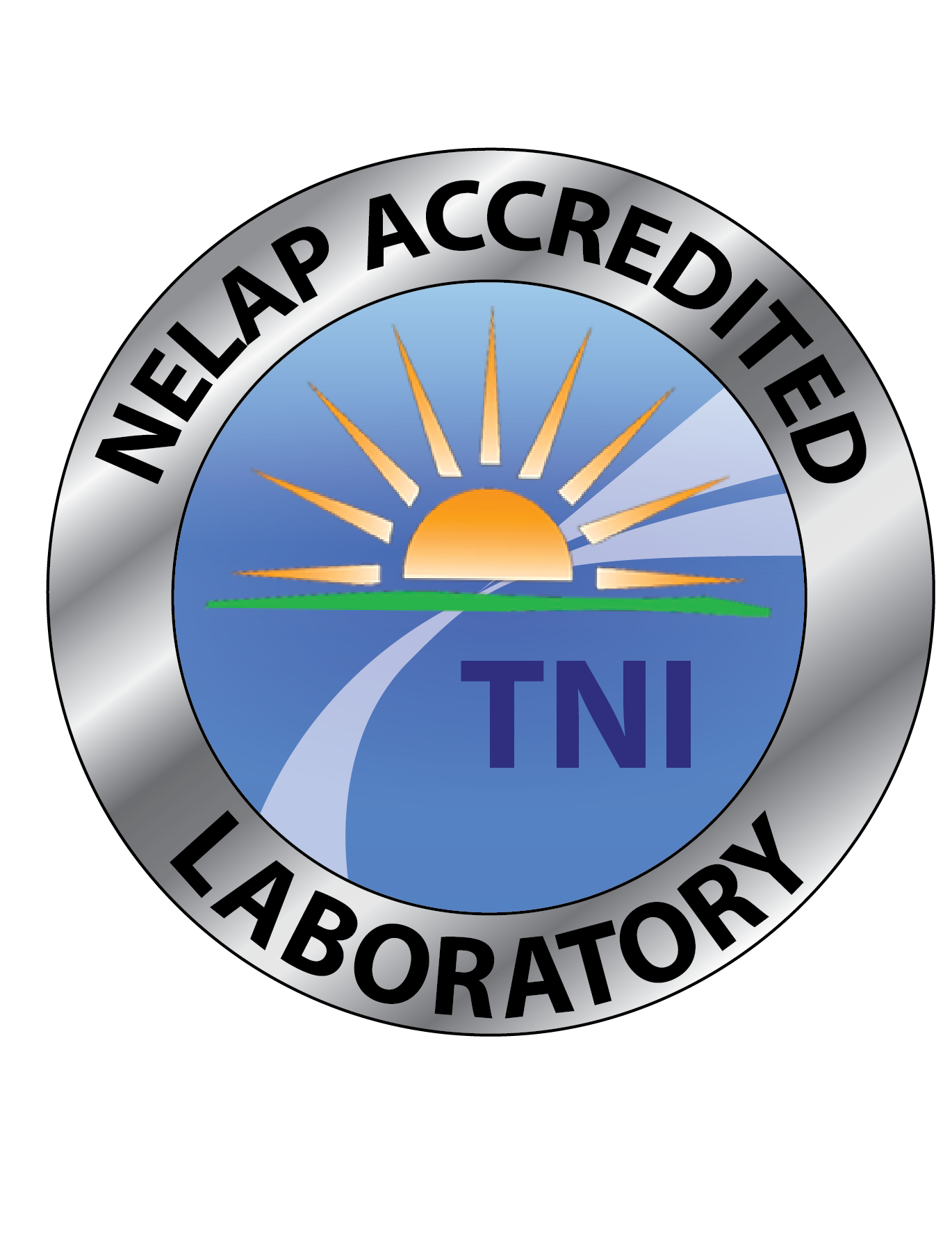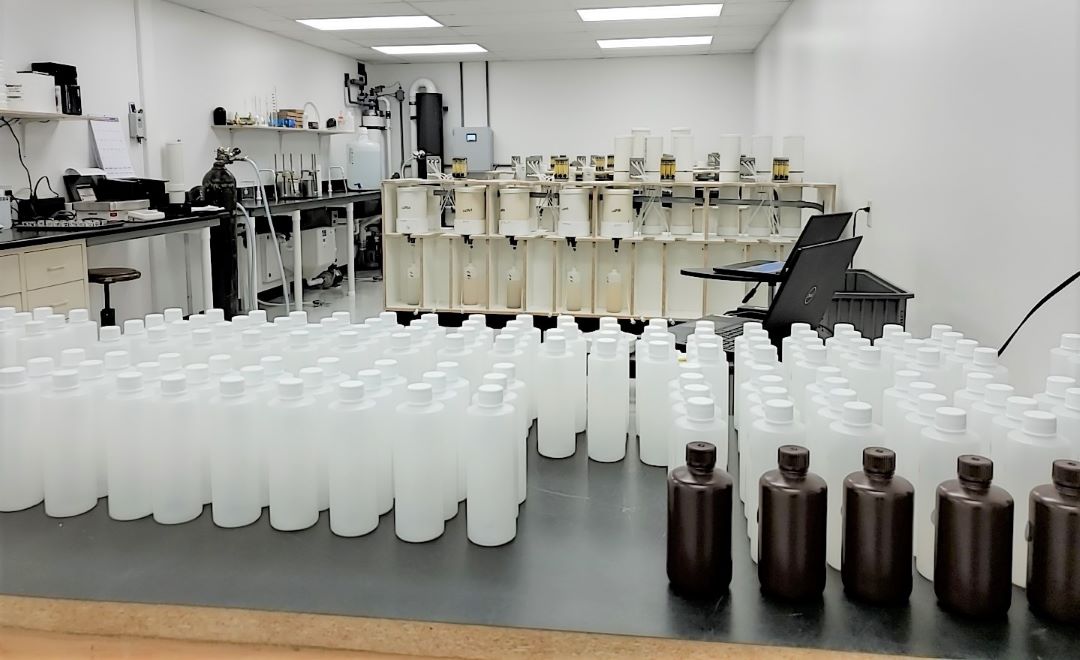
Geochemistry
ACZ’s large geochemistry department has over 40 years of experience performing mining-specific static and kinetic testing for acid rock drainage (ARD) or acid mine drainage (AMD) prediction, as well as metal leaching (ML) tests. ACZ Laboratories was founded in 1980 to provide environmental analytical support services to the mining industry in the Western U.S. Today, ACZ is an analytical laboratory with inorganic, organic, and radiochemical capabilities and meets the needs of precious metal, base-metal, coal, and uranium mining operations throughout the world. ACZ’s main client base is still the mining industry, and approximately sixty to seventy percent of current client revenue comes from this thriving global industry.
ACZ has the analytical services and experienced staff to meet the specialized needs associated with the mining industry, from baseline studies and permitting to operational monitoring requirements through closure. Mining corporations and their consultants worldwide choose ACZ for its turnkey capabilities and high-quality defensible data delivered in a consistent and timely manner.
Geochemistry and Mining Specialized Capabilities Include:
- Acid-Base Accounting (ABA)
- Acid Generation Potential (AGP)
- Acid Neutralization Potential (ANP) Heat and No-Heat Modified
- Sulfur Speciation (Total, Sulfide/Pyritic, Sulfate, Organic/Residual)
- Hot Water Extractable Sulfur
- Modified Sobek (Client Specific & Montana State University Modified Sobek)
- State of Nevada Modified Sobek Procedure
- ASTM E1915 Residual Sulfur & Carbon Content via Pyrolysis (%)
- Net Acid Generation (NAG) Single NAG, Australian NAG
- Saturated Paste Extractions
- Incremental Sampling Method (ISM) and Incremental Composite Sampling (ICS)
- Plant Available, Soluble and Exchangeable Metals Leaching Extractions (KCL, AB-DTPA, KCL, Hot water, Sodium Acetate)
- Acid Mine Drainage
- Overburden Analysis
- Humidity Cell Testing (HCT) via ASTM D5744-13
- Column Leach Studies: Nevada Meteoric Water Mobility Procedure (MWMP) & Client-Modified Columns
- California Waste Extraction Test (WET) CAL Title 22 TTLC 18 Metals
- Synthetic Precipitation Leaching Procedure (SPLP, EPA 1312)
- Toxicity Characteristic Leaching Procedure (TCLP, EPA 1311)
- EPA Method 3050B, 3051A, 3052 and 3060A Digestions
- Sequential Extraction for Metal Fractioning (Tessier and modified Tessier)
- Metals Speciation
- Plant Tissue and Biota Tissue Analysis for Trace Metals and Ecological Risk Assessment (ERA) and Bioaccumulation Studies.
- Wet and Dry Sieving
- Texture via Hydrometer
- Crushing and Pulverization Including a Rocklabs Ring and Puck Pulverizer
- Leaching Environmental Assessment Framework (LEAF) Methods (EPA 1313, EPA 1314, & EPA 1315)
Acid-Base Accounting (ABA)
Acid-Base Accounting is a dependable criterion by which overburden materials can be evaluated. An acid-base account consists of two measurements: 1) total or pyritic sulfur and 2) neutralization potential. The accounting balances the maximum potential acidity against total neutralizers in the sample.
The total or pyritic sulfur content accurately quantifies the potential acidity of materials when all sulfur is present as a pyritic mineral. When gypsum is found in an overburden sample or the materials are weathered, sulfur occurs in the form of sulfates. Samples high in organic carbon usually contain organic sulfur. When part of the sulfur occurs in non-acid-producing forms, the maximum potential acidity, as calculated, will be too high. It is for this reason that such calculations are referred to as maximums and that in doubtful cases, appropriate acid and water leachings should be made to rule out those forms of sulfur which do not produce acid. Then, from the stoichiometric equation of pyrite oxidation, the maximum potential acidity can be calculated in terms of calcium carbonate required to neutralize 1000 tons of the material. The neutralization potential of overburden materials (the second component of a net acid-base account) measures the amount of neutralizers present on the overburden materials. This measurement is found by treating a sample with a known amount of standardized hydrochloric acid, heating to assure complete reaction, and titrating with a standardized base. The result is then expressed in calcium carbonate equivalents. When balanced against acidity from the total sulfur measurement, a net acid-base account can be made.
ACZ Laboratories holds certification from the State of Nevada for acid-base accounting methods. Nevada is currently the only state agency offering this certification.
Humidity Cell Testing (HCT)
Since 1980, ACZ has been supporting the global mining industry’s specialized needs, from baseline studies to operational water quality monitoring, plus static and kinetic testing for acid rock drainage prediction (ARD). ACZ Laboratories offers Humidity Cell Testing (HCT) via ASTM D5744-13 in a new state-of-the-art laboratory. HCT is designed to simulate in-situ weathering of waste rock and tailings in a controlled laboratory setting. ACZ’s highly experienced staff, quality assurance program, as well as state and national certifications (NELAP) ensure our clients’ data is accurate, defensible, and reproducible. All analyses are performed in accordance with globally recognized standards (ISO 17025). Partnering with ACZ is a commitment to quality and a guarantee of personalized service.
- State of Nevada Certification for Static (ABA) and Kinetic (HCT, MWME) Testing
- Wider Columns Available for Analysis of Tailings
- Client-specific customized Testing
- Low-level Metals Analysis in a Class 100 Cleanroom
- All Testing Performed in one 31,000 Sq. Ft. Lab
- USDA Foreign Soils Permit
- Monthly Reporting for HCT Progress Evaluations
Leaching Environmental Assessment Framework (LEAF) Methods (EPA 1313, EPA 1314, EPA 1315, & EPA 1316)
Leaching Environmental Assessment Framework (LEAF) methods have been designed to consider the effect of key environmental conditions and waste properties on leaching. These include: evaluating the partitioning of constituents between liquid and solid phases at or near equilibrium conditions over a wide range of pH values, evaluating constituent releases from solid materials as a function of cumulative liquid-to-solid ratio, and determining the rate of mass transport from either monolithic materials or compacted granular materials as a function of time using deionized water as the leaching solution.
X-Ray Diffraction (XRD)
This service supports our clientele’s environmental monitoring and material characterization needs. Samples can be analyzed using one or multiple of the following analyses: Quantitative XRD Analysis with Rietveld Refinement for the precise identification of mineral phases, Semi-Quantitative XRD Analysis for the estimation of mineral concentrations in samples, and Clay Speciation for detailed identification and concentration estimates of individual clay minerals (<2 µm).


